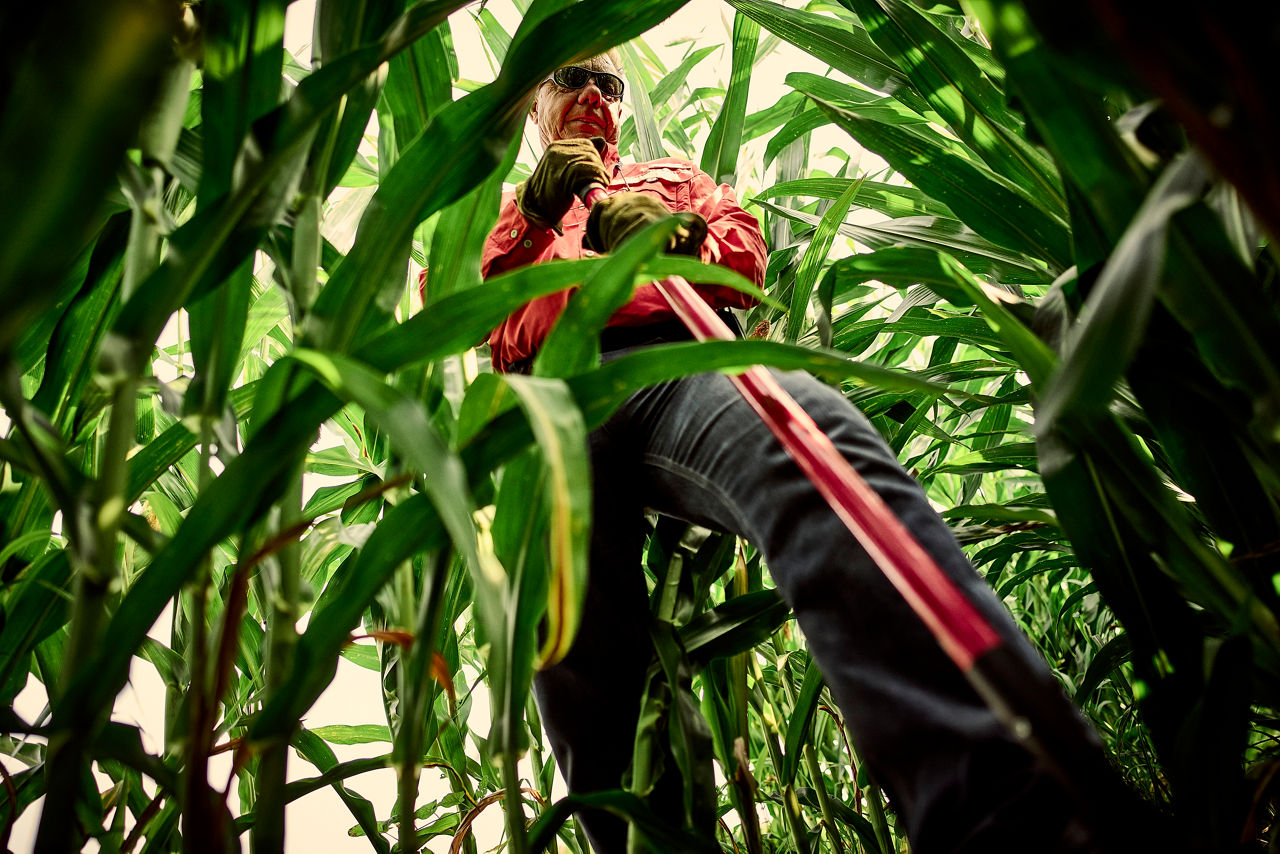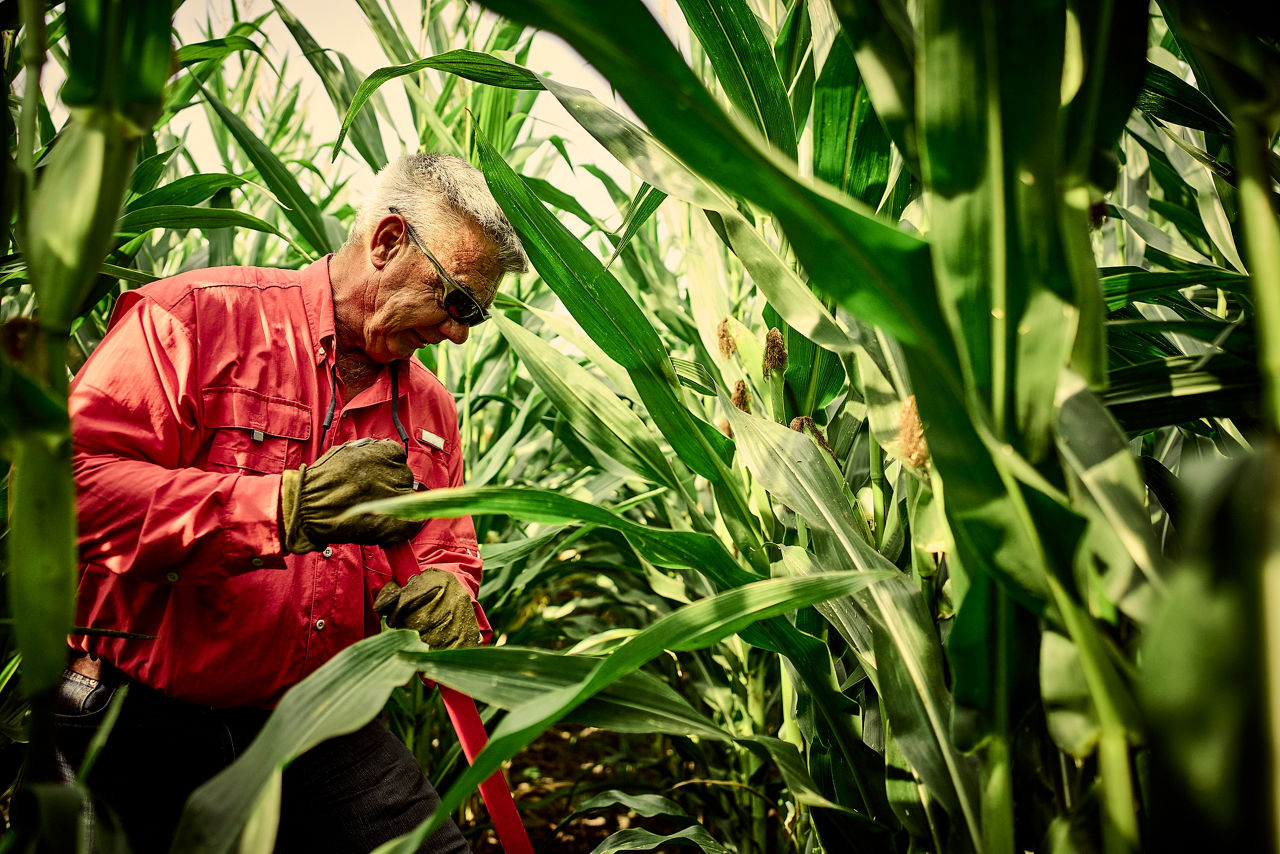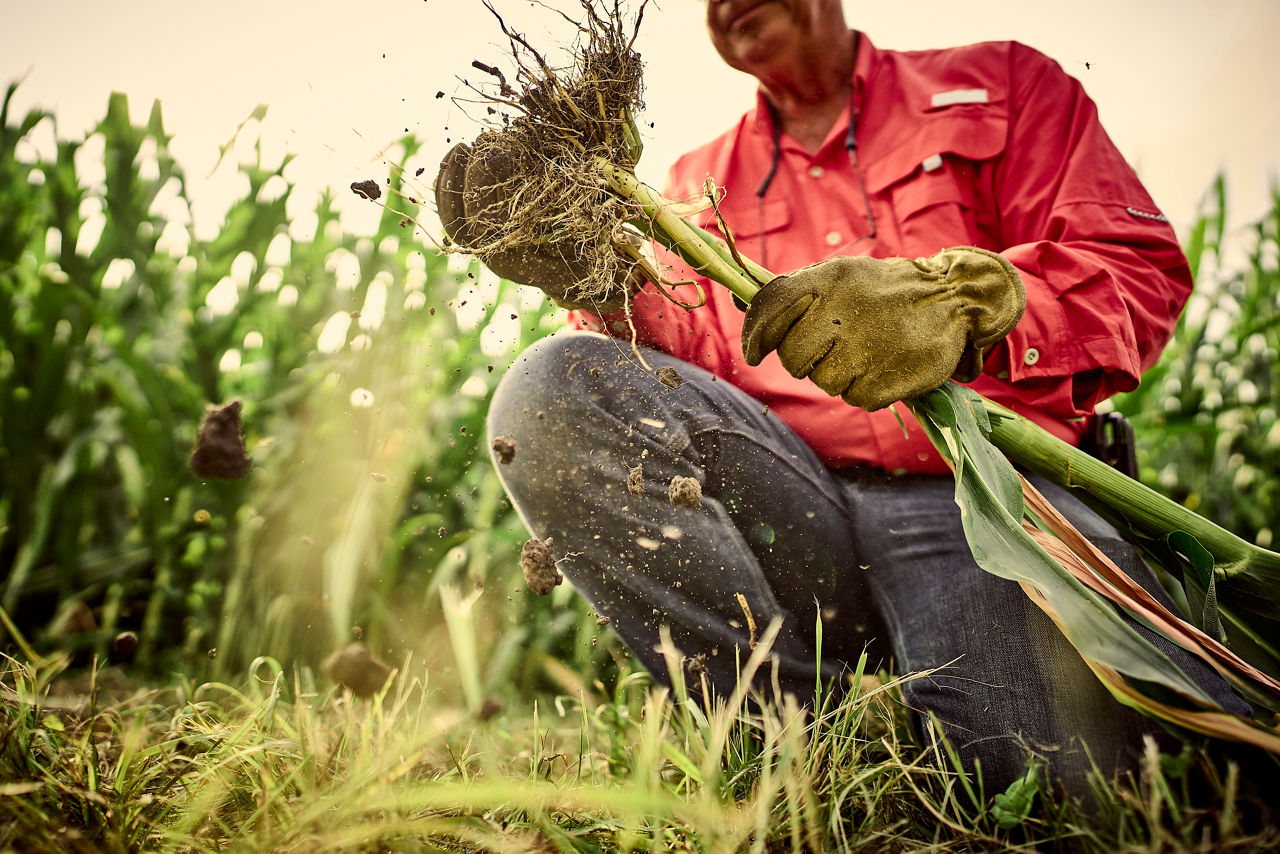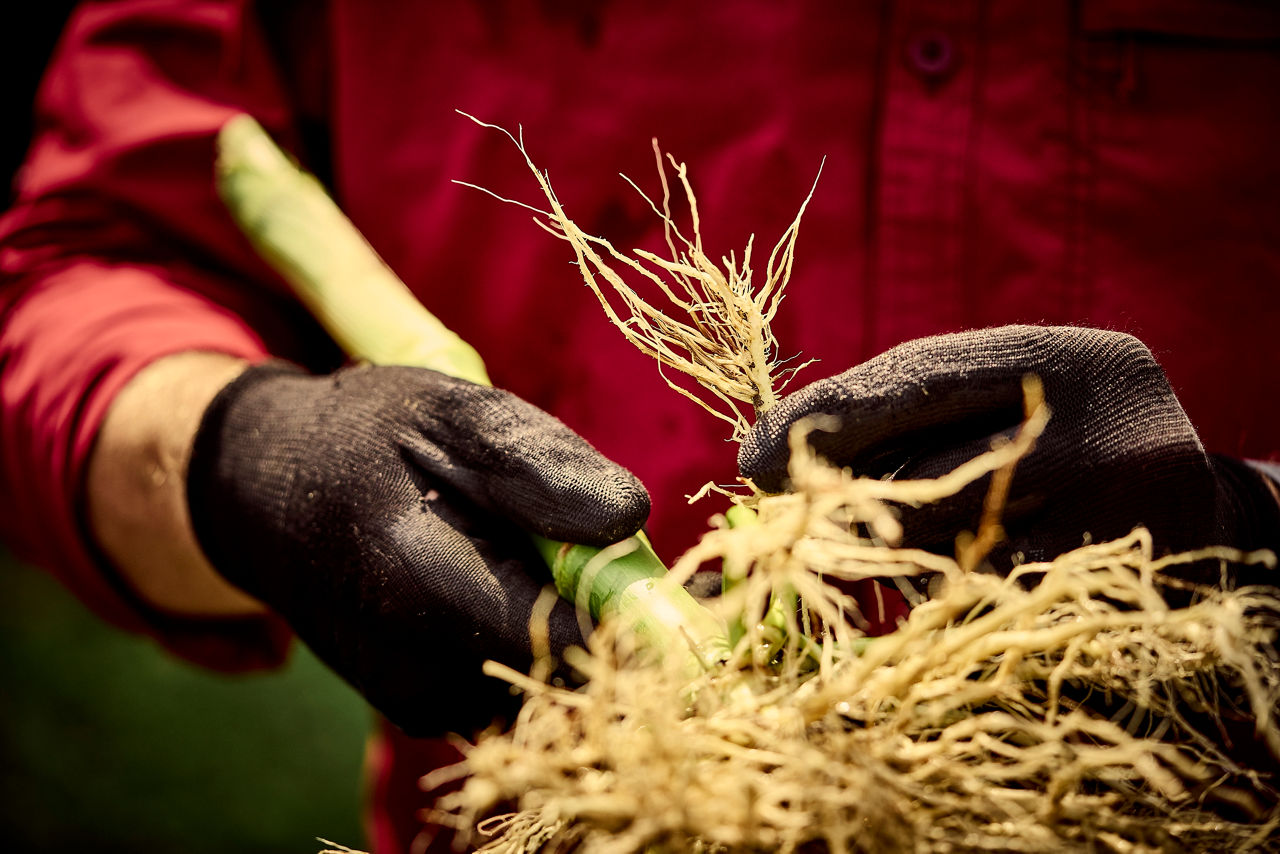How Do I Perform a Root Dig?
November 6, 2023

As a corn farmer, it’s vital to be on the lookout for corn rootworm in your fields so you can protect your yield potential. But just looking above ground won’t give you a complete overview of plant health. You need to dig a little deeper to get the full picture. The best way to do that is by performing a root dig.
By looking at the potential node damage from corn rootworm through a root dig, you can determine what adjustments need to be made to your insect management plan going forward that will put you ahead of the yield-robbing pest. Follow these steps to learn how you can perform your own root dig to monitor the impact on your yield potential.
Step 1: Location

Choose a suitable location and select five or more consecutive plants from four different and random areas in your field to properly assess the damage potential.
Step 2: Categorize

Remove plant tops, then mark each root system with a paper tag for easy identification during the damage scoring later on.
Step 3: Digging

Using a sharp shovel, dig away from the plant. To ensure that you keep the roots intact, we recommend digging at least 4-6 inches away from the base of the plant. Gently move around the base of the plant, taking special care not to rip it from the ground.
Step 4: Extract

The next step is to extract the roots from the soil. Once you have the roots removed, you can knock off any excess soil by gently hitting the root masses.
Step 5: Washing

Now dunk the roots into a bucket of water for five to ten minutes to rinse away the remaining soil. If corn rootworm larvae are present, they will float to the top. If there is still an excessive amount of soil on your roots after dunking, spray with a hose or pressure washer, or continue to soak them in water for up to 15 minutes.
Step 6: Evaluation

Finally, assess the potential damage. Look for signs of corn rootworm feeding, scarring, tunneling or pruning. Node damage is rated on a scale of 0-3, with 0 meaning no damage and 3 meaning three or more nodes have damage from corn rootworm feeding. Here’s an article that breaks down the scaling system. Record scores for each plant with the help of those paper tags from earlier.
What To Do if You Have Corn Rootworm Damage
If you found corn rootworm damage on your roots, we recommend talking with a Bayer representative or local dealer about Bayer’s trait offerings and the best management practices for corn rootworm. It's important to prepare for next season so you can get the protection your fields need. Here are two traits that might be right for you:

SmartStax® PRO with RNAi Technology offers the strongest biotech defense from Bayer against corn rootworm pressure while still providing protection against above-ground pests. It’s recommended for high-pressure corn rootworm situations.

VT4PRO™ with RNAi Technology provides our widest spectrum of insect defense from Bayer. With top-to-bottom protection, this trait offers protection against both above- and below-ground corn pests. It’s recommended for fields with low to moderate corn rootworm pressure.
Looking for more information on this topic or have a question regarding anything else?